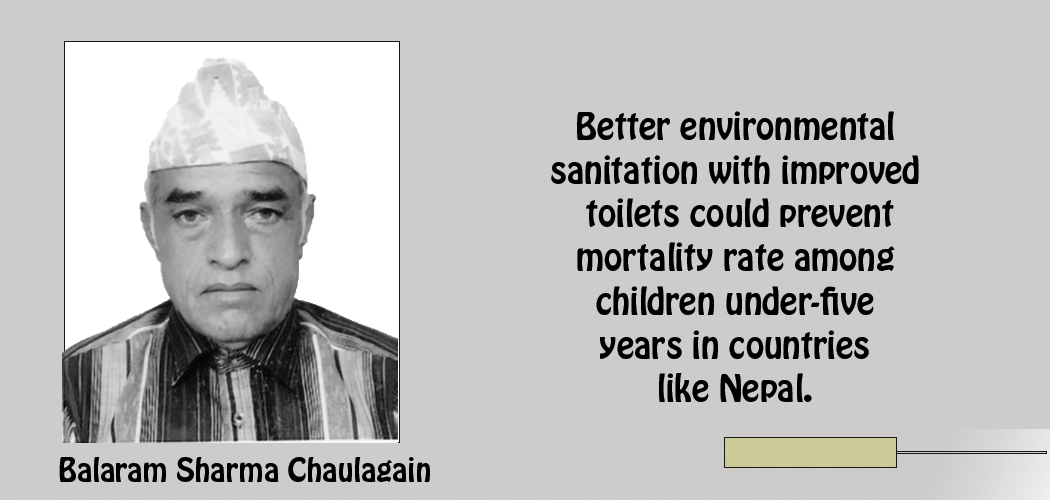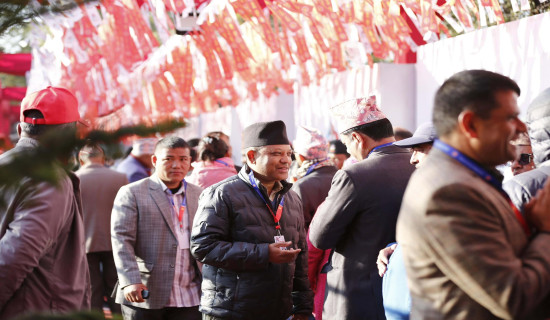- Wednesday, 17 December 2025
Promote Public Toilets Nationwide
Balaram Chaulagain
The history of public toilets in Nepal dates back to the period of King Pratap Malla when the first toilet was built at Hanumandhoka. After that, it took about 400 years for every household in Kathmandu to have a simple bathroom. From the beginning of civilisation, people started using a toilet to maintain health and hygiene, and protect themselves from various communicable diseases and foul smell. Toilets are regarded as the best tools in the public health management system.
Maintaining public health is very important in metropolises where more people reside than in rural areas. There are six metropolitan cities, 11 sub-metropolitan cities, 276 municipalities, and 460 rural municipalities in Nepal. All local levels function as local governments with well-defined constitutional powers, duties and responsibilities to serve people. These 753 local levels have also been further divided into 6,753 wards, which function as the lowest units of government. Providing basic health and hygiene to people through establishing public toilets should be one of the prime responsibilities of each local level. Unless the local governments fail to handle locally produced garbage properly, the investment of government in public health is sure to go down the drain. A local government is considered healthy and hygienic if it has public toilets with adequate running water to flush out human waste. But most of local government offices across the country do not have public toilets. Even the Kathmandu Valley does not have adequate public toilets. The existing ones do not meet even basic standards.
Quality sewage system
The United Nations has come up with the Sustainable Development Goals (SDGs) to encourage nations to make strides in in a number of areas such as health and sanitation, education, economic development, nutrition, gender, among others. As per universal goal of the World Health Organisation (WHO), all people should have access to safe sanitation services, including hygienic toilets connected to quality sewage system. We must agree with the UN body's idea to construct more and more toilets to discourage the age-old practice of open defecation. As such, Nepal should continue to upgrade toilets as part of its toilet resolution aimed at ending open defecation practice and improving the quality of life of people. The construction of clean toilet is an important part of pushing urban and rural civilisation. Along with toilet revolution, the country should also focus on improving sanitation to boost the tourism industry for overall development of the country. Keeping this in mind, the government has already initiated a basic sanitation programme aimed at increasing people’s access to toilet in each household nationwide.
The government, political parties and various other stakeholders came together in 2013 with a promise to make Nepal an Open Defecation Free (ODF) country by the end of 2030. It is needless to say that urine and stool are sources of communicable diseases like diarrhea, typhoid, hepatitis and such others. Besides, intestinal worms like roundworm, tape worms, hook worms are also spread when the practice of open defecation continues. Hence, open defecation is a major problem with public health.
With the reduction of unhealthy practice of open defecation by half since its inception, Nepal has made significant progress in basic sanitation. So long as we fail to motivate concerned officials to make consistent efforts and take tailored measures to tackle longstanding issues, we can't achieve the goal of making Nepal an open defecation-free nation. Local authorities are now more responsible to play their role in constructing better toilets. Clean, accessible and suitable toilet is basic precursor for environmental health and basic sanitation. Better environmental sanitation with improved toilets could prevent mortality rate among children under-five years in countries like Nepal. Open defecation perpetuates vicious cycle of diseases and poverty. The countries where open defecation is widespread have the highest number of deaths of children aged below five as well as the highest level of malnutrition and big disparities of wealth. Absence of basic sanitation and toilets in rural and urban areas can result in an unhealthy environment contaminated by human waste. Adequate numbers of toilets for proper waste disposal can slow infection cycle of many disease-causing organisms. Considering this, Nepal launched a toilet revolution across the country a few years ago with an aim to make such facilities to be cleaner and more regulated.
Dire need
In rural areas, some toilets were just like makeshift shelters surrounded by bunch of cornstalks, and were open pit next to human settlements. At tourist sites, visitors were angered by insufficient toilets, unhygienic conditions and lack of sanitation workers. Thus, there is a dire need of constructing public toilets in all public places. All the local levels must allocate a fair amount of annual and seasonal budget for building public toilets. Public participation is a must in this campaign to construct more public toilets across the country. According to WHO, in Southeast Asia Region, including Nepal, access to these services remains a problem with 900 million people lacking basic sanitation and more than 500 million practising open defecation which leads to transmission of numerous communicable diseases. Let us hope that public toilets will be built all over the country in the days to come.
(Chaulagain is a retired public health officer of Nepal government.













-original-thumb.jpg)
-original-thumb.jpg)

